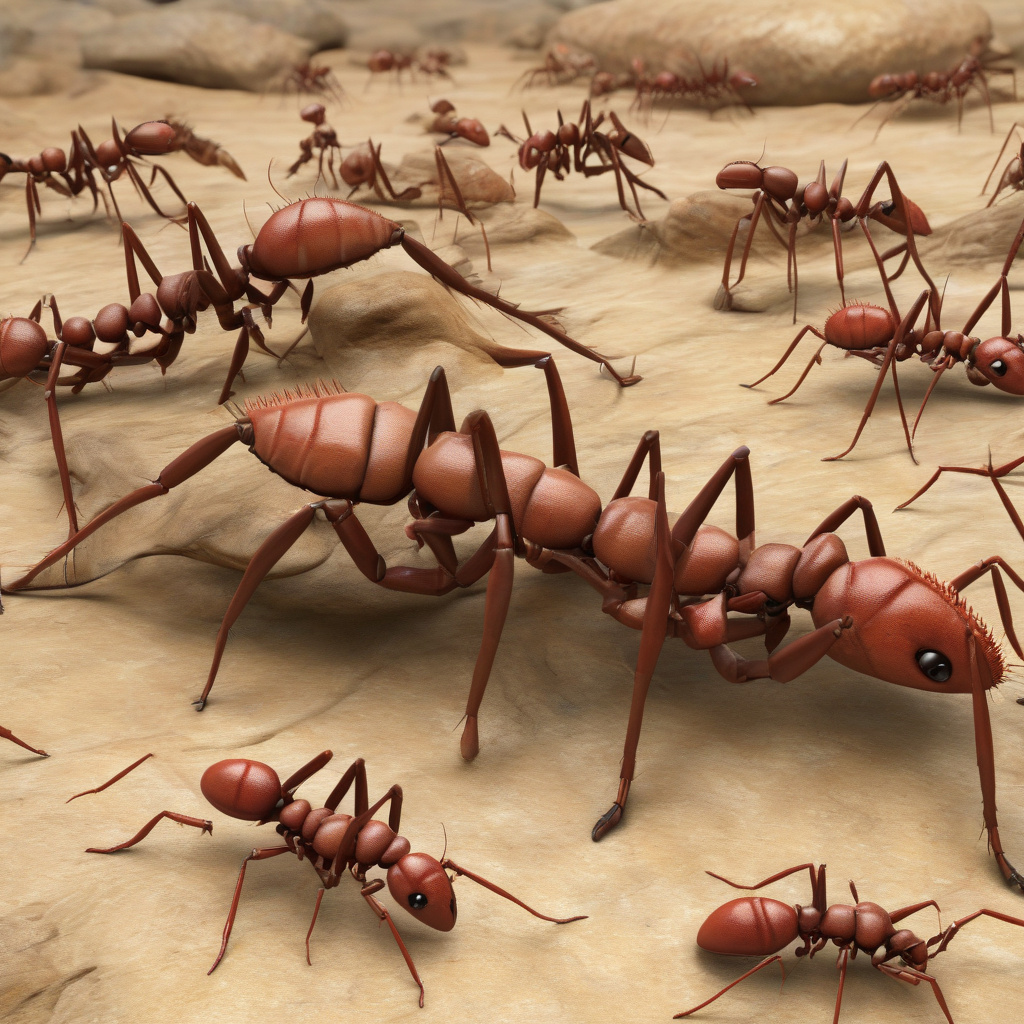113 million years: Oldest-ever fossil of ‘hell ant’ reveals ancient predatory traits
A fossilized ant unearthed in northeastern Brazil is rewriting the story of ant evolution. Preserved in amber for over a hundred million years, this remarkable specimen provides unprecedented insights into the behavior and anatomy of ancient ants. Dubbed the ‘hell ant’ due to its bizarre horn-like mandibles, this discovery sheds new light on the predatory nature of these insects in the Cretaceous period.
The ‘hell ant’ belonged to a group known as haidomyrmecines, which existed alongside the dinosaurs. Unlike modern ants that use their mandibles to carry food or build nests, the ‘hell ant’ had unique blade-like appendages that it used to impale its prey. This predatory behavior sets it apart from its contemporary counterparts and showcases the diverse range of adaptations that ants have undergone over millions of years.
Researchers believe that the ‘hell ant’ was an efficient hunter, using its unusual mandibles to capture unsuspecting prey. The discovery of this fossil challenges previous assumptions about the early ancestors of ants and highlights the complexity of ecosystems during the Cretaceous period. By studying fossils like the ‘hell ant,’ scientists can piece together the puzzle of how these insects evolved into the diverse species we see today.
In addition to its predatory traits, the ‘hell ant’ fossil also provides valuable information about the ancient environment it inhabited. The preservation of this specimen in amber offers a rare glimpse into the flora and fauna of northeastern Brazil during the Mesozoic era. By analyzing the chemical composition of the amber, researchers can reconstruct the conditions that existed over a hundred million years ago, further enriching our understanding of prehistoric life.
This groundbreaking discovery underscores the importance of paleontological research in unraveling the mysteries of the past. Fossils like the ‘hell ant’ not only expand our knowledge of ancient species but also showcase the remarkable adaptations that have enabled insects to thrive for millions of years. By studying the evolution of ants, scientists can gain valuable insights into the processes that have shaped biodiversity on Earth.
As technology and research methods continue to advance, we can expect more astonishing discoveries that challenge our existing perceptions of the natural world. The ‘hell ant’ fossil serves as a reminder of the rich history of life on our planet and the endless possibilities for exploration and discovery that lie ahead. By peering into the past, we gain a deeper appreciation for the complexity and resilience of the organisms that have inhabited Earth for millions of years.
In conclusion, the oldest-ever fossil of the ‘hell ant’ offers a rare glimpse into the predatory traits of ancient ants and the ecosystems they inhabited. This remarkable discovery not only sheds light on the evolution of these insects but also highlights the intricate relationships between species throughout Earth’s history. As we unravel the secrets of the past, we pave the way for a better understanding of the present and future of life on our planet.
#AntEvolution, #PaleontologicalResearch, #PredatoryTraits, #AncientEcosystems, #PrehistoricLife












